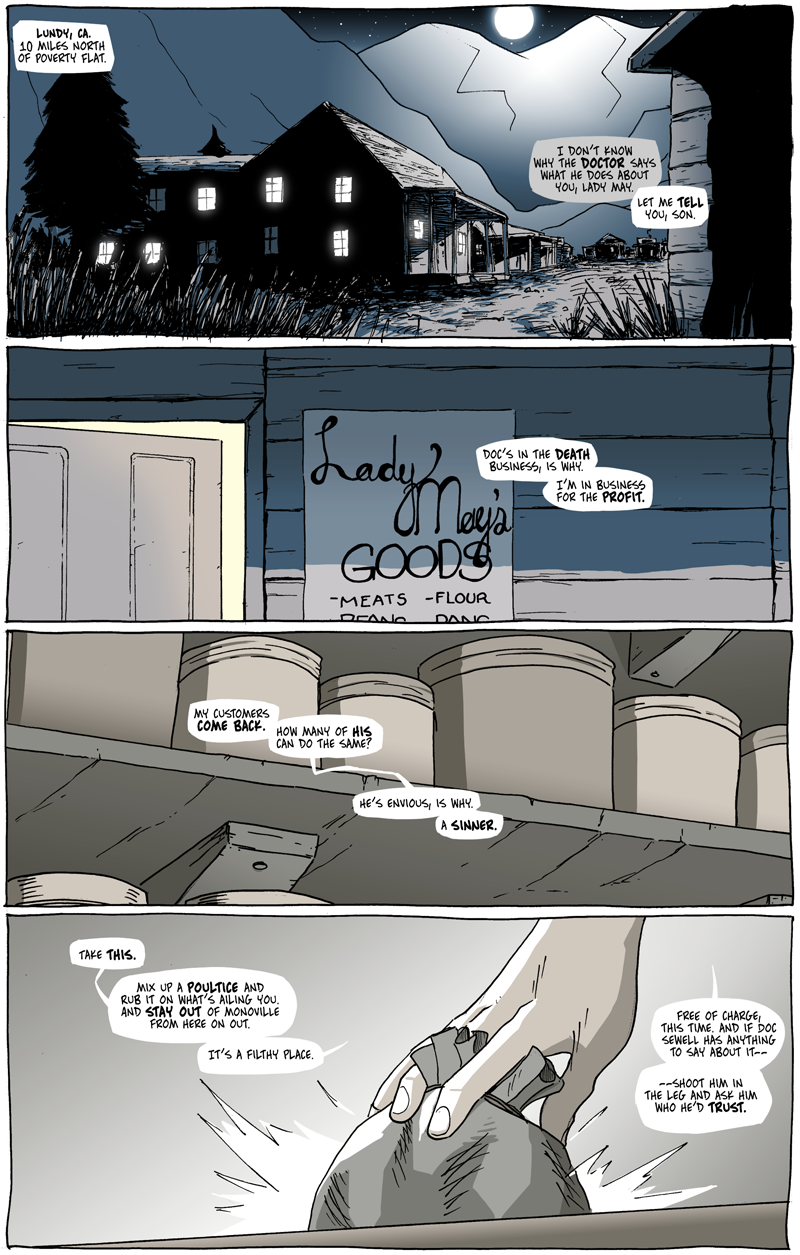The Doctor is Out
Lundy was a mining camp that came up during the boom of the late 1800’s in the Mono Basin. Like Lee Vining (Poverty Flat), Bridgeport, Benton, Monoville, and other small towns surrounding Mono Lake, Lundy ultimately served as a resource for Bodie, the “big city” where all the money was. Lundy was well-placed, however; it sat at the end of––big surprise––Lundy Lake and both were in the valley of Lundy Canyon. The canyon is very high-walled and became a bit of a destination when valued minerals were found in the mountains; upon the findings, Lundy sprouted up in the space of about six months, and disappeared almost as quickly when the veins dried up.
In terms of history, the Lundy presented in Long John is much more honest than Poverty Flat. To tell the truth, the story in Poverty Flat could have happened anywhere, and my study of the town came in mostly with regard to geography. The story of Lundy itself intrigued me––and the town was added to the comic rather late––and its rushed birth, expansion, and death are not only a poetic analogue to Bodie itself, but produced a chaotic but communal environment that works perfectly as the home for the Johns’ contact (who we’ll learn more about in the next few pages).
What’s difficult, I’m learning, about telling a story in the Mono Basin is that not much photographic documentation of the region exists for the public, especially during that period of time. Bodie is very well recorded as is Mono Lake, but, when it comes to making a comic, a lot is left to educated guesses based on what little evidence there is and what I saw during my trips there. I was lamenting during the drawing of “Sunza” that Lee Vining had too little historical photographic documentation to be more accurate––Lundy has even less, and what does exist is from a bit later than when Long John takes place.
Not that anybody is complaining.



Discussion ¬